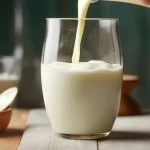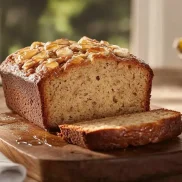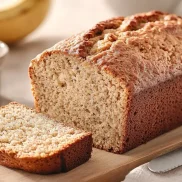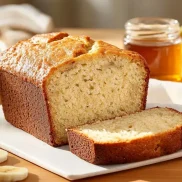Have you ever found yourself halfway through a recipe, only to realize you’re out of buttermilk? Or maybe you’ve wondered if the store-bought version is as fresh and wholesome as you’d like. The good news is you don’t have to rely on ready-made buttermilk – you can make your own with just a few simple ingredients! Learning how can I make my own buttermilk is an essential skill for home cooks, saving you trips to the store while providing a fresh, customizable alternative that elevates your dishes. For more insights on another method, visit our guide on how to make buttermilk from cream.
In this guide, we’ll dive into everything you need to know about making buttermilk from scratch. From understanding its history and different types to exploring why making your own is beneficial, you’ll gain the confidence to master this versatile ingredient. Let’s get started!
Table of Contents
Understanding Buttermilk
Definition and History
Buttermilk, in its simplest form, is a tangy, slightly thick liquid used in a variety of culinary applications, from baking to marinades. Historically, buttermilk referred to the liquid left behind after churning butter from cultured cream. This traditional version was rich in probiotics, slightly sour, and a staple in many rural diets. Farmers and households valued it not only for its refreshing taste but also for its role in adding moisture and acidity to recipes.
Modern buttermilk, often labeled as “cultured buttermilk,” is a bit different. It’s produced by adding lactic acid bacteria to milk, which thickens and sours it, mimicking the traditional product’s flavor and texture. While the original process has faded in popularity due to changes in dairy production, cultured buttermilk is now a widely available substitute. However, knowing how to make your own ensures you have a fresher, more versatile option on hand whenever needed.
Traditional Buttermilk vs. Cultured Buttermilk
Key Differences
The main difference between traditional and cultured buttermilk lies in their production methods:
- Traditional Buttermilk: This is the byproduct of butter churning, containing small butterfat particles and natural cultures. It’s thinner and milder in taste compared to its cultured counterpart.
- Cultured Buttermilk: This is made by fermenting milk with lactic acid bacteria. It’s tangier, thicker, and more consistent in flavor and texture.
Uses in Cooking
Both types of buttermilk shine in the kitchen, but they are used slightly differently. Understanding these distinctions can help you make the best choice for your recipes:
- Traditional Buttermilk: This type is ideal for recipes requiring a milder tang, such as soups or refreshing beverages. Additionally, it’s a fantastic choice for traditional breadmaking because of its smooth flavor.
- Cultured Buttermilk: This variety excels in baking due to its acidity, which reacts effectively with leavening agents like baking soda. As a result, it produces fluffier pancakes, biscuits, and cakes. Moreover, its tangy profile significantly enhances marinades, dressings, and savory dishes.
In summary, knowing the nuances between these buttermilk types helps you choose or create the right version to suit your specific culinary needs.
Why Make Your Own Buttermilk?
Benefits
Making your own buttermilk comes with numerous advantages:
- Convenience: Never worry about running to the store mid-recipe.
- Customization: Adjust the tanginess and thickness to suit your preferences.
- Freshness: Homemade buttermilk is free from preservatives and artificial additives.
Cost Savings
Buying a carton of buttermilk can be costly, especially if you only need a small amount. By making your own, you’re using ingredients already in your kitchen, like milk and an acidic agent (lemon juice or vinegar). This not only saves money but also reduces waste by allowing you to make just the amount you need.
Culinary Control
Homemade buttermilk opens up exciting possibilities for experimenting with different types of milk (e.g., whole, skim, or plant-based) and acids. Additionally, it lets you create unique flavors and textures while giving you full control over the level of acidity to match specific recipe requirements.
Ultimately, learning how can I make my own buttermilk empowers you as a cook. Moreover, it offers a fresh, economical, and versatile alternative to store-bought options. Whether you’re baking a fluffy cake or whipping up a creamy dressing, homemade buttermilk will undoubtedly be a game-changer in your kitchen.
Ingredients Needed
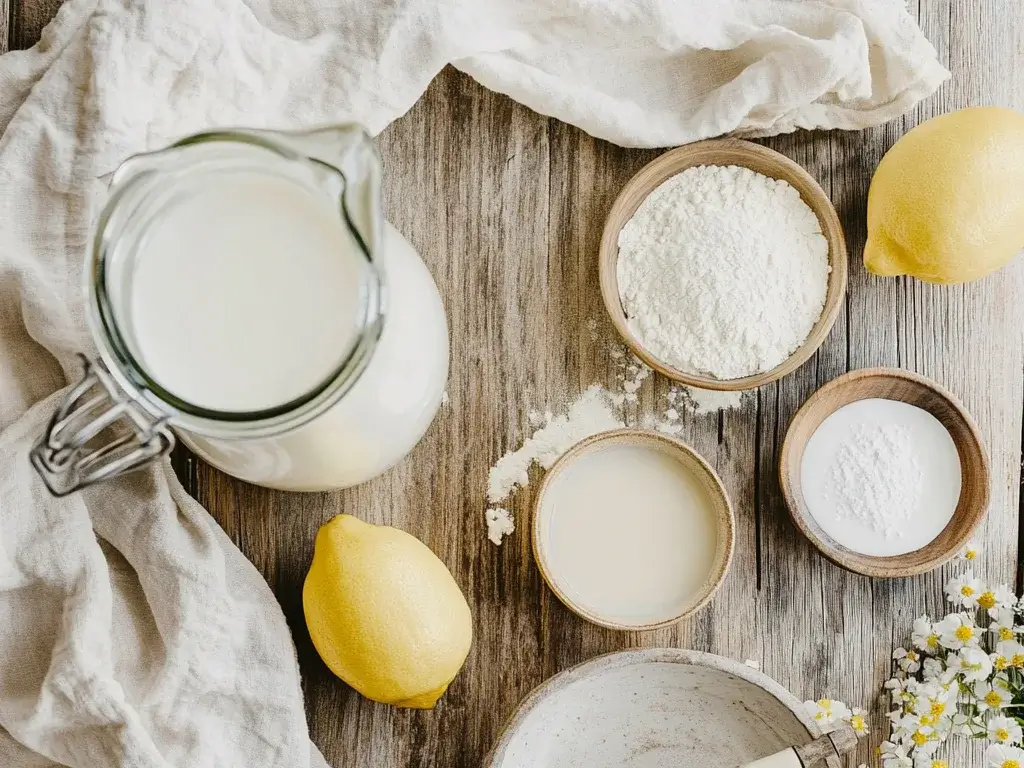
Essential Items for Homemade Buttermilk
Creating your own buttermilk is surprisingly simple and requires just two key ingredients: milk and an acidic agent. These are often staples in most kitchens, making the process both accessible and convenient.
Choosing the Right Milk
The type of milk you choose plays a significant role in the flavor and consistency of your buttermilk. Here are some common options:
- Whole Milk: Offers a rich and creamy result, ideal for baking and cooking.
- Skim Milk: Produces a lighter buttermilk, suitable for calorie-conscious recipes.
- Plant-Based Milks: Almond, soy, and oat milks can be used to create vegan buttermilk. Keep in mind that the flavor and texture will vary slightly depending on the milk’s composition.
Choosing the right milk ensures that your homemade buttermilk complements your intended dish perfectly.
Acidic Agents for Curdling
To create buttermilk, you’ll need an acidic agent to curdle the milk. Here are some popular options:
- Lemon Juice: A natural and commonly available choice. It adds a subtle citrusy tang.
- Vinegar: White vinegar works best due to its neutral flavor, but apple cider vinegar can also be used for a touch of sweetness.
- Cream of Tartar: A powdered acid that’s perfect for when you don’t have liquid acids on hand.
Experimenting with different combinations of milk and acids can help you tailor the buttermilk to your specific needs.
Methods for Making Buttermilk
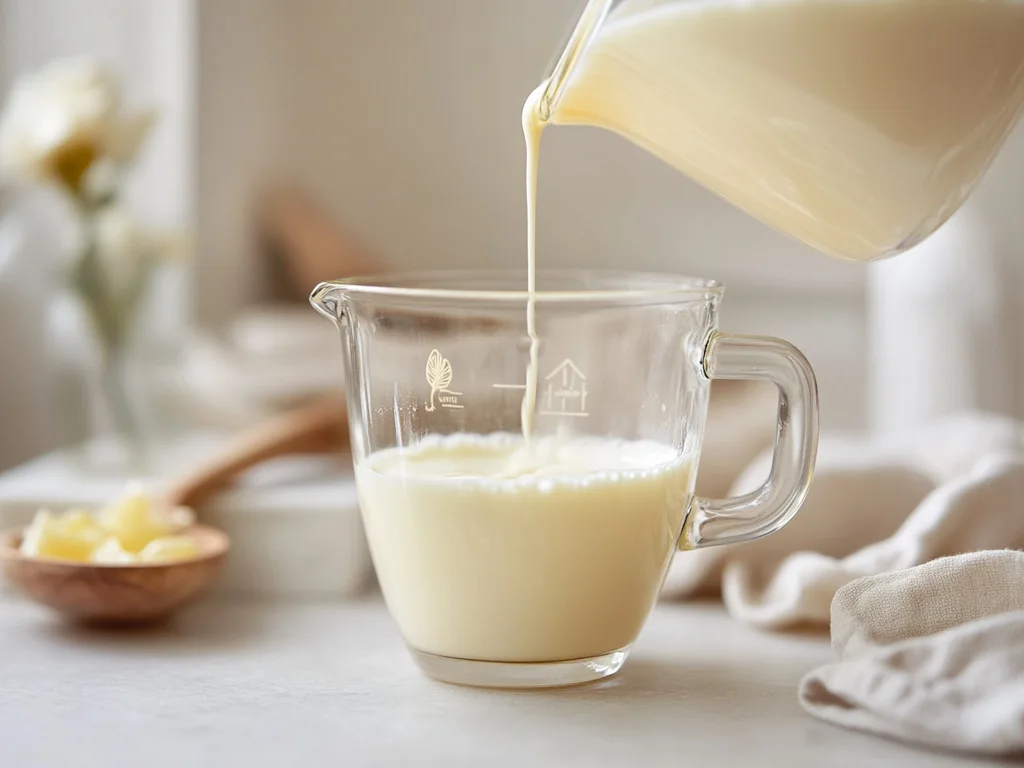
The Quick-Curdle Method
This is the most common and fastest way to make buttermilk at home. It requires just a few minutes and minimal effort.
Step-by-Step Guide
- Pour 1 cup of milk into a measuring cup or bowl.
- Add 1 tablespoon of your chosen acidic agent (lemon juice or vinegar).
- Stir the mixture thoroughly and let it sit for 5-10 minutes.
- Once the milk has thickened slightly and appears curdled, it’s ready to use.
Lemon Juice or Vinegar
Lemon juice and vinegar are the go-to acids for this method. They work quickly to sour the milk and create the classic buttermilk texture. Use fresh lemon juice for the best results, and opt for distilled white vinegar for a neutral flavor profile.
Using Cream of Tartar
To use cream of tartar, mix 1 teaspoon of the powder with 1 cup of milk. Stir until the cream of tartar dissolves completely, and let the mixture sit for 5-10 minutes. This method is particularly useful when you’re out of liquid acids but still want to achieve the same tangy result.
Overnight Fermentation Method
For a richer and more probiotic buttermilk, the fermentation method is ideal. This approach requires more time but delivers authentic, cultured buttermilk.
Creating Buttermilk with Active Cultures
- Warm 1 cup of milk to room temperature.
- Add 2 tablespoons of a live culture starter (yogurt or store-bought cultured buttermilk).
- Stir well and cover the container loosely with a cloth.
- Let the mixture sit at room temperature overnight or for about 12-24 hours.
- Once it thickens and develops a tangy aroma, it’s ready to use.
Yogurt-Based Starter
Using plain yogurt as a starter is a simple and effective option. It’s readily available and ensures a consistent texture and flavor.
Store-Bought Cultured Starter
Cultured buttermilk from the store can also be used as a starter. This method maximizes consistency and flavor, replicating traditional buttermilk most closely.
Plant-Based Buttermilk Alternatives
For those following a vegan diet or looking for dairy-free options, plant-based buttermilk is an excellent choice.
Adapting Methods for Vegan Recipes
- Use plant-based milk such as almond, soy, or oat milk.
- Add 1 tablespoon of an acidic agent (lemon juice or vinegar) to 1 cup of milk.
- Stir thoroughly and let the mixture sit for 5-10 minutes.
Almond, Soy, and Oat Milk
- Almond Milk: Produces a light and slightly nutty buttermilk.
- Soy Milk: Offers a creamier texture, ideal for baking.
- Oat Milk: Has a neutral flavor and works well in both sweet and savory dishes.
By understanding these methods, you can create buttermilk that suits any dietary preference or recipe requirement.
Common Issues and Troubleshooting
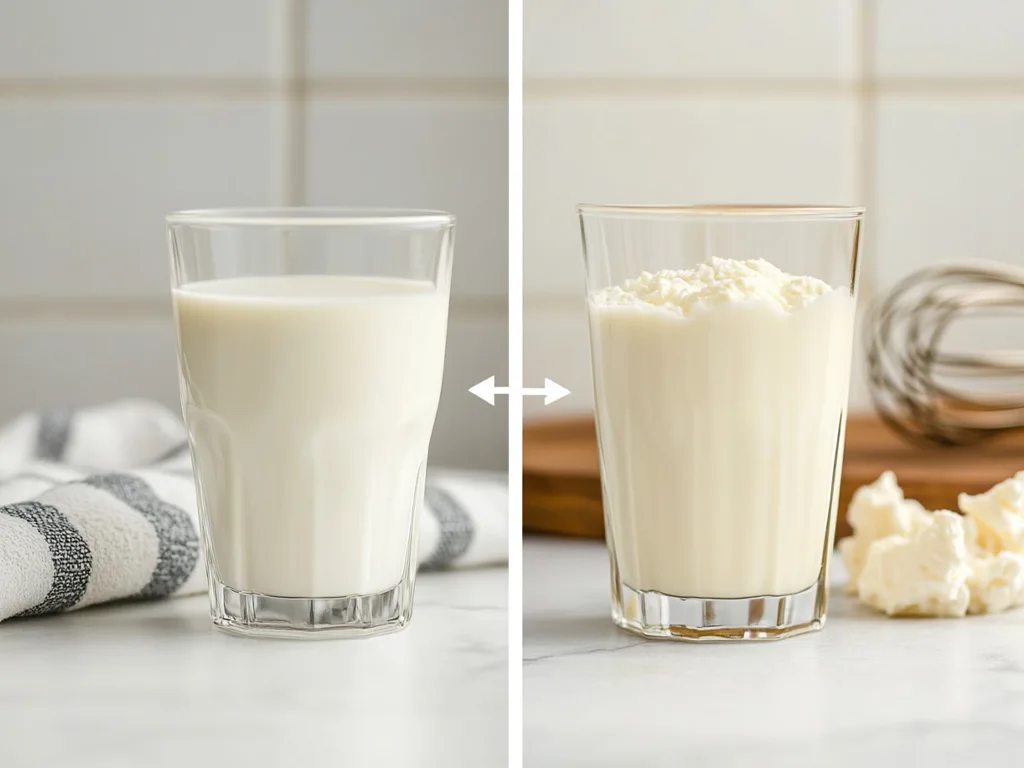
Why Didn’t My Milk Curdle?
Sometimes, your milk might not curdle as expected. Here are a few common reasons and their solutions:
- Low Acidity: Ensure you’ve added enough acidic agent. The standard ratio is 1 tablespoon of acid per cup of milk.
- Cold Milk: Use room-temperature milk to allow the curdling process to occur more effectively.
- Old Milk: If your milk is nearing its expiration date, it may not react properly with the acid. Opt for fresh milk for the best results.
If your milk still doesn’t curdle, try increasing the amount of acidic agent or allowing it to sit for a longer time.
Adjusting the Acidity Level
If your buttermilk is too tangy or not tangy enough, you can fine-tune the acidity to suit your taste:
- To Reduce Tanginess: Dilute the buttermilk with a small amount of plain milk.
- To Increase Tanginess: Add a few more drops of lemon juice or vinegar and stir thoroughly.
Achieving the perfect balance ensures your buttermilk complements your recipe without overpowering it.
Storage and Shelf Life
Homemade buttermilk typically lasts for 5-7 days when stored in the refrigerator. Follow these tips to maximize its shelf life:
- Store it in an airtight container to prevent contamination.
- Keep it in the coldest part of the fridge, away from the door.
- Label the container with the date it was made to track freshness.
If you notice any off smells or discoloration, discard the buttermilk immediately.
Uses for Homemade Buttermilk
Cooking Applications
Buttermilk’s tangy flavor and creamy texture make it a versatile ingredient in the kitchen. Here are some popular uses:
- Pancakes and Waffles: Adds a tender texture and subtle tang. Check out our fluffy pancake recipes to make the most of it!
- Biscuits: Creates flaky, moist layers. Explore our buttermilk biscuit recipes for a perfect bake every time!
- Fried Chicken: Acts as a tenderizing marinade, enhancing flavor and juiciness
Its versatility ensures it shines in both savory and sweet recipes.
Baking with Buttermilk
In baking, buttermilk is a key ingredient for light and fluffy results. Here’s where it excels:
- Cakes: Adds moisture and enhances the crumb.
- Muffins: Balances sweetness with a slight tang.
- Scones: Improves texture and provides a delicate flavor.
Using buttermilk in baked goods also helps activate baking soda, creating a perfect rise.
Savory Recipes
Buttermilk’s acidity enhances savory dishes by tenderizing proteins and balancing flavors. Consider these ideas:
- Dressings: Use it as a base for creamy ranch or blue cheese dressings.
- Soups: Add a tangy kick to chilled soups like cucumber or potato.
- Marinades: Tenderizes meat and infuses flavor into proteins like chicken or pork.
Experimenting with buttermilk in your favorite savory recipes can yield delicious results. For more creative ideas and recipes, you can explore BBC’s guide to buttermilk to learn about its diverse culinary applications.
Tips for Success
Choosing High-Quality Ingredients
The quality of your ingredients directly impacts the flavor of your buttermilk. Here’s how to ensure success:
- Use fresh milk for the best taste and consistency.
- Opt for organic or minimally processed acidic agents to avoid unwanted additives.
Investing in quality ingredients elevates your homemade buttermilk and the dishes you create.
Experimenting with Recipes
Don’t be afraid to get creative with your buttermilk. Here are some ideas to inspire you:
- Different Milk Types: Try goat milk or coconut milk for unique flavors.
- Flavor Additions: Mix in herbs, spices, or garlic for savory applications.
- New Recipes: Incorporate buttermilk into unexpected dishes like coleslaw or mashed potatoes.
Experimentation allows you to discover new ways to enjoy this versatile ingredient.
Frequently Asked Questions
What can I use if I don’t have buttermilk?
If you don’t have buttermilk, you can easily make a substitute using milk and an acidic agent like lemon juice or vinegar. Alternatively, yogurt or sour cream thinned with water works well in most recipes.
Can I freeze homemade buttermilk?
Yes, you can freeze homemade buttermilk for up to three months. Divide it into small portions in airtight containers for easy use. Thaw it in the refrigerator and stir well before using.
How do I know if my buttermilk has gone bad?
Spoiled buttermilk may develop an unpleasant smell, discoloration, or mold. If you notice any of these signs, discard it immediately to avoid health risks.
Can I use plant-based milk for buttermilk?
Absolutely! Almond, soy, and oat milk are great options for making plant-based buttermilk. Add an acidic agent like lemon juice or vinegar to curdle the milk.
Why is my homemade buttermilk not thick?
Homemade buttermilk made with milk and acids is typically thinner than store-bought versions. For a thicker texture, use cultured methods with yogurt or a live culture starter.
Does buttermilk tenderize meat?
Yes, buttermilk’s acidity helps break down proteins in meat, making it more tender and flavorful. It’s particularly effective for poultry and pork marinades.
Conclusion
Mastering the art of making your own buttermilk is a game-changing skill for any home cook. Not only does it save you from last-minute trips to the store, but it also provides the freedom to create a fresher and more tailored ingredient to suit your recipes. Furthermore, whether you’re making tender pancakes, flaky biscuits, or tangy marinades, homemade buttermilk adds a delightful touch to countless dishes. By following the straightforward methods and tips outlined in this guide, you can confidently prepare buttermilk whenever the need arises. Therefore, don’t hesitate—start experimenting in your kitchen today and enjoy the satisfaction of crafting this versatile culinary essential!

